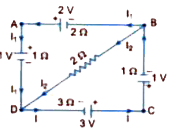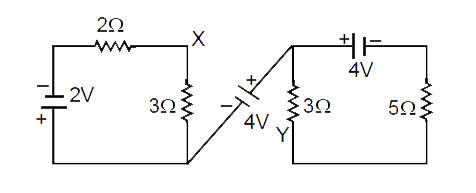Using Kirchhoff ' s rules , calculate the potential difference between B and D in the circuit diagram as shown in the figure.

Text Solution
Applying Kirchhoff 's second law to mesh ABDA
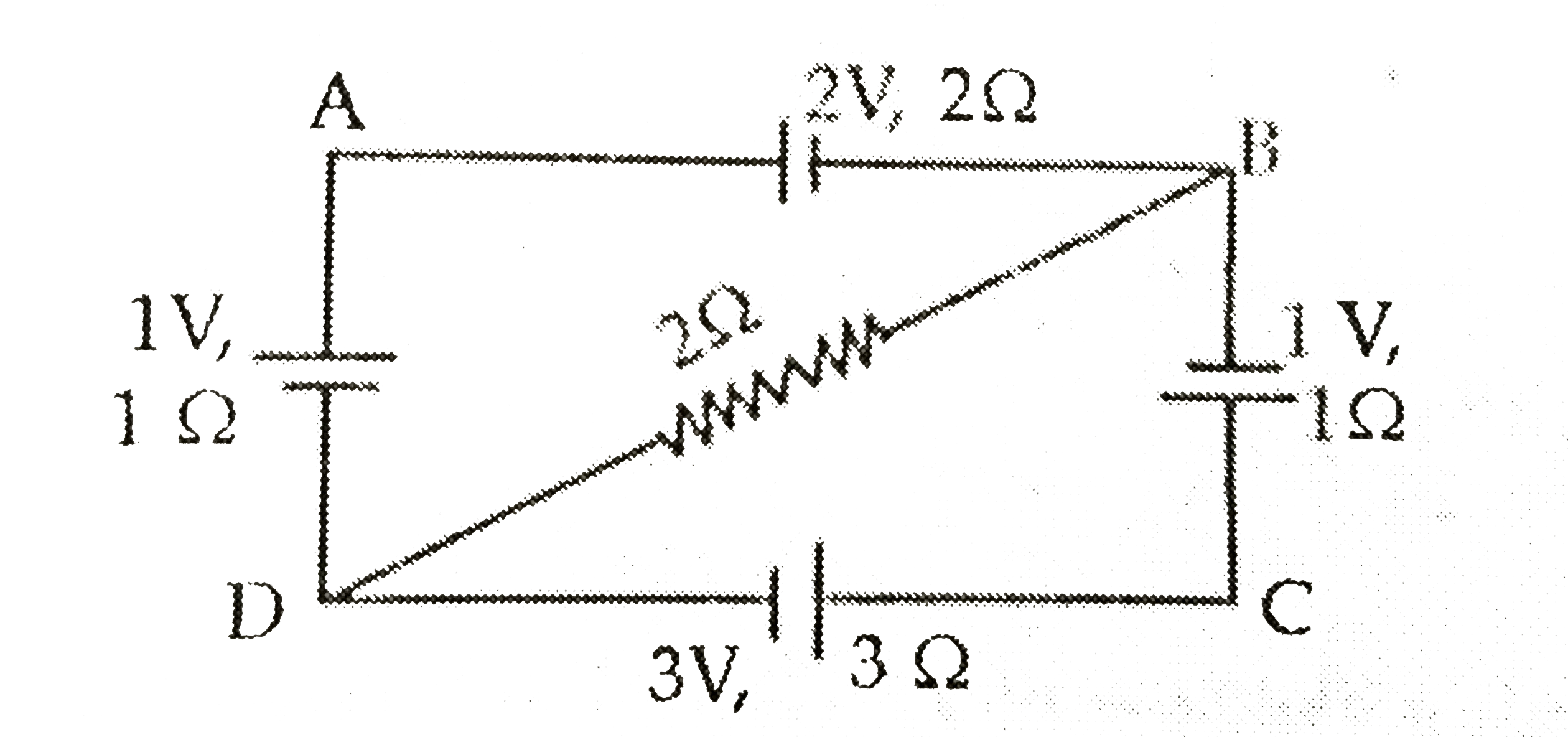
−2−2(I−I1)−2I+1−(I−I1)=0
−5I+3I1=0 . . . (i)
Applying Kirchhoff ' s second law to mesh BCDB
+1+I1+3I1−3+2I=0
2I+I1=1 . . . (ii)
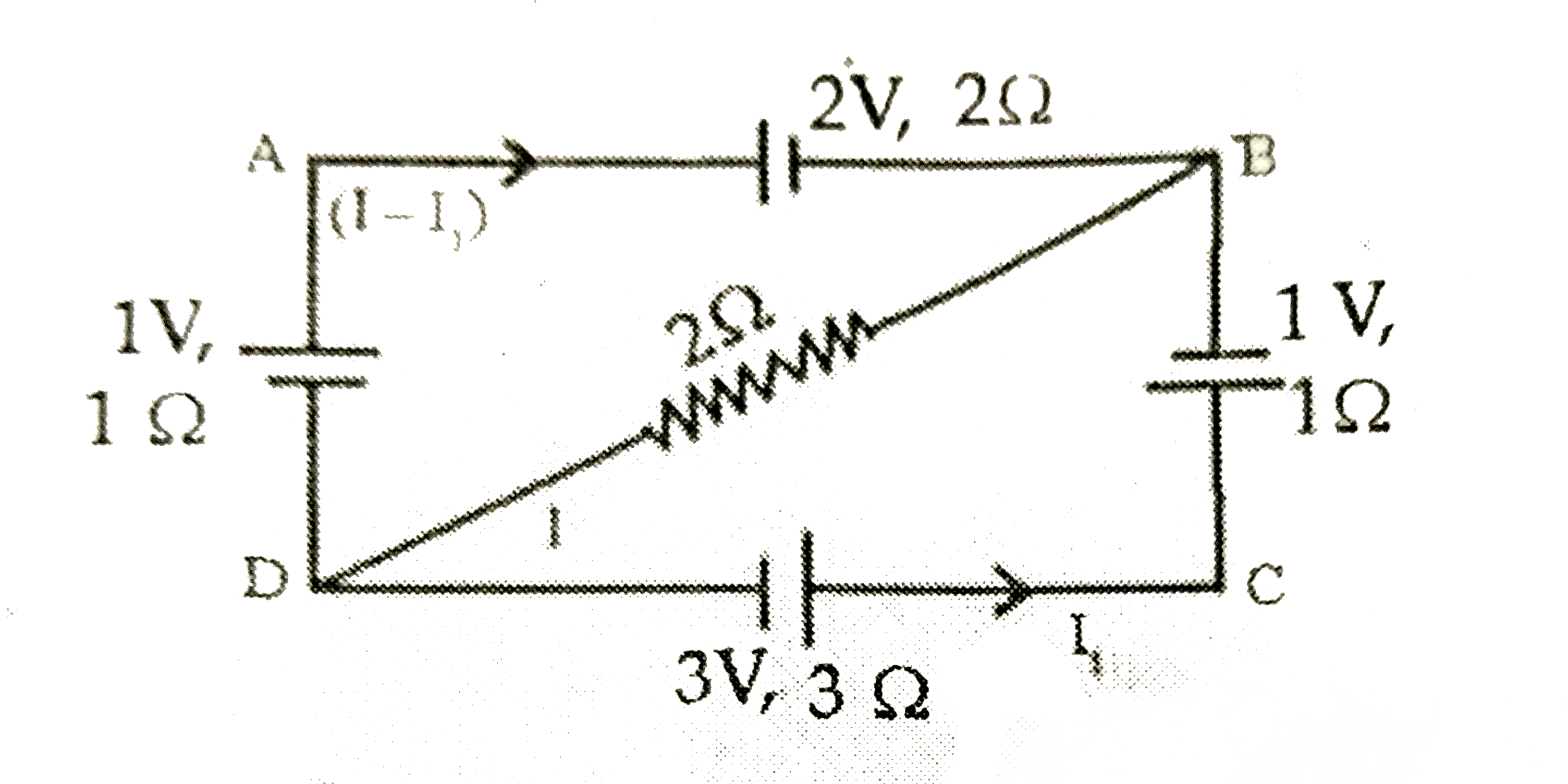
Solving equations (i) and (ii) , I=113A
Potential difference between B and D
V=IR=113×2=213V
|
Topper's Solved these Questions
- XII BOARDSBOOK - XII BOARDS PREVIOUS YEARCHAPTER - XII BOARDSEXERCISE - SECTION - D
6 Videos
- XII BOARDSBOOK - XII BOARDS PREVIOUS YEARCHAPTER - XII BOARDSEXERCISE - SECTION - E
6 Videos
- XII BOARDSBOOK - XII BOARDS PREVIOUS YEARCHAPTER - XII BOARDSEXERCISE - [SET -III, OUTSIDE DELHI]
5 Videos
- SAMPLE PAPER 2019BOOK - XII BOARDS PREVIOUS YEARCHAPTER - SAMPLE PAPER 2019EXERCISE - SECTION D
6 Videos
Similar Questions
Knowledge Check
The potential difference between A and B in the circuit shown is -
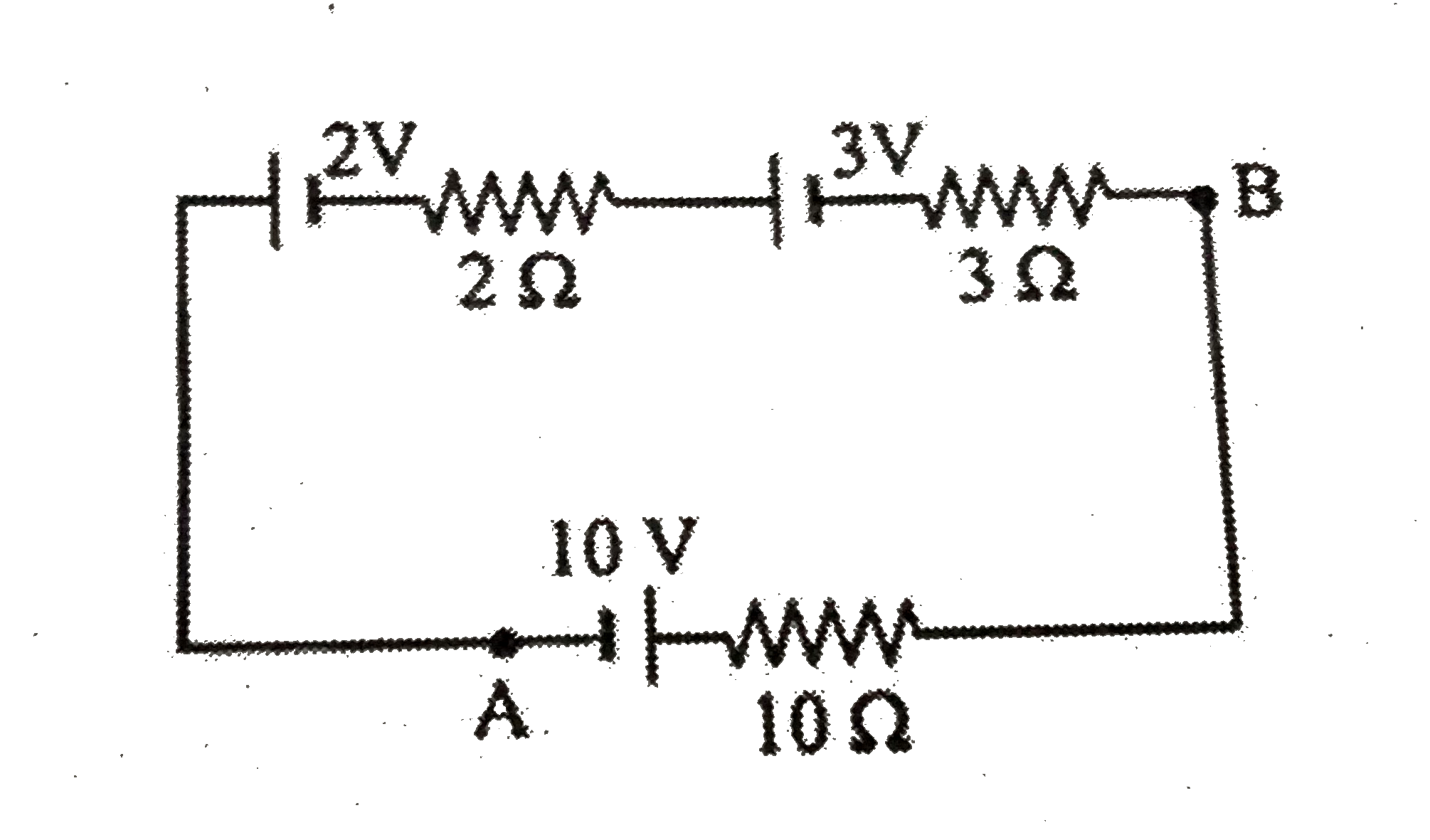 A10VB5 VC15 VDzero
A10VB5 VC15 VDzeroWhat is the potential difference between the points A and B in the circuit diagram shown in figure ?
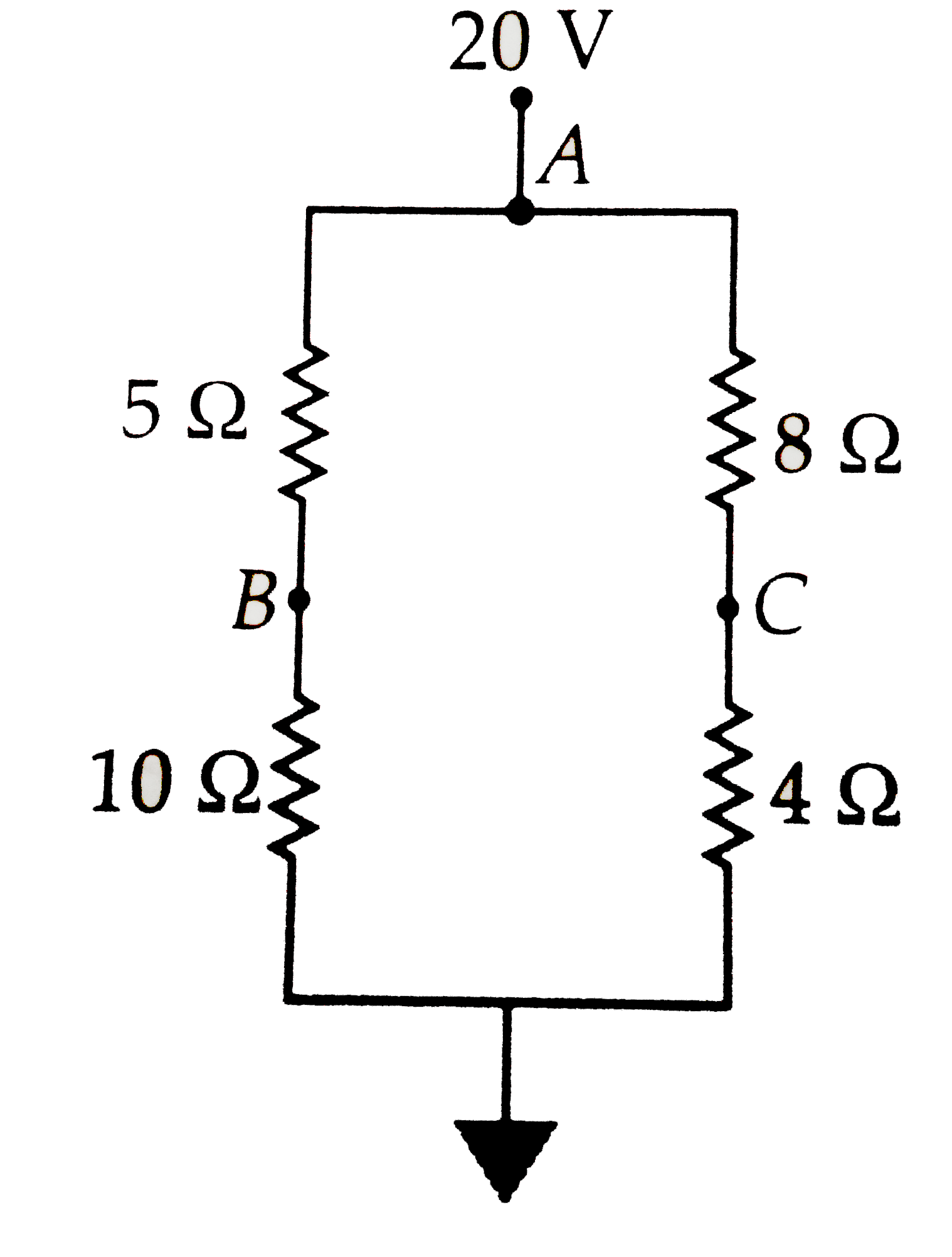 A203VB103VC20√3VD10√3V
A203VB103VC20√3VD10√3VWhat is the potential difference between the points A and B in the circuit diagram shown in figure ?
 A203VB103VC20√3VD10√3V
A203VB103VC20√3VD10√3V
Determine the potential difference between X and Y in the circuit shown in Figure.
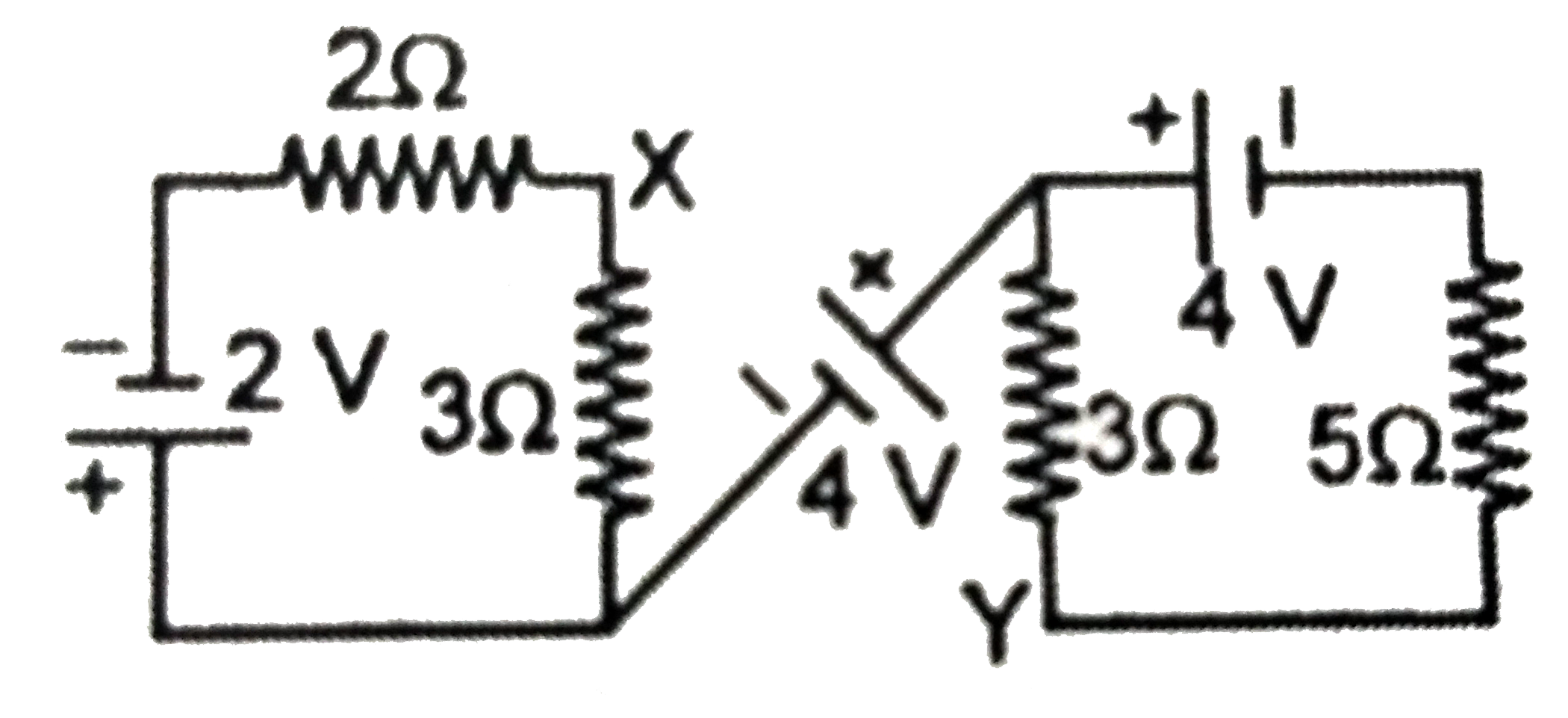
View SolutionFind current through the cell and potential difference between A and D in the circuit shown in the figure
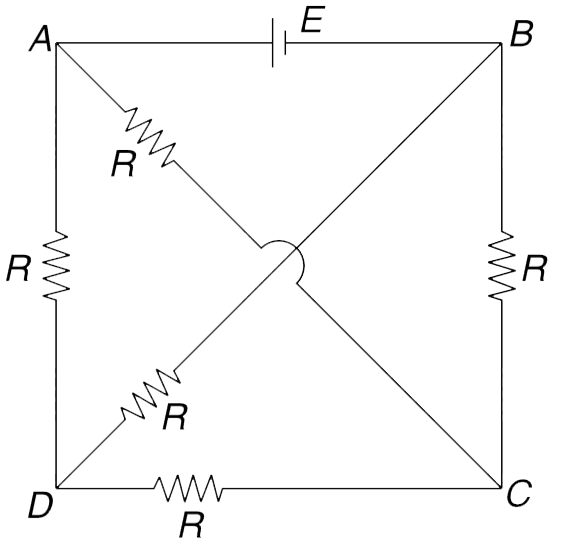
View SolutionIn the given circuit calculate potential difference between A and B
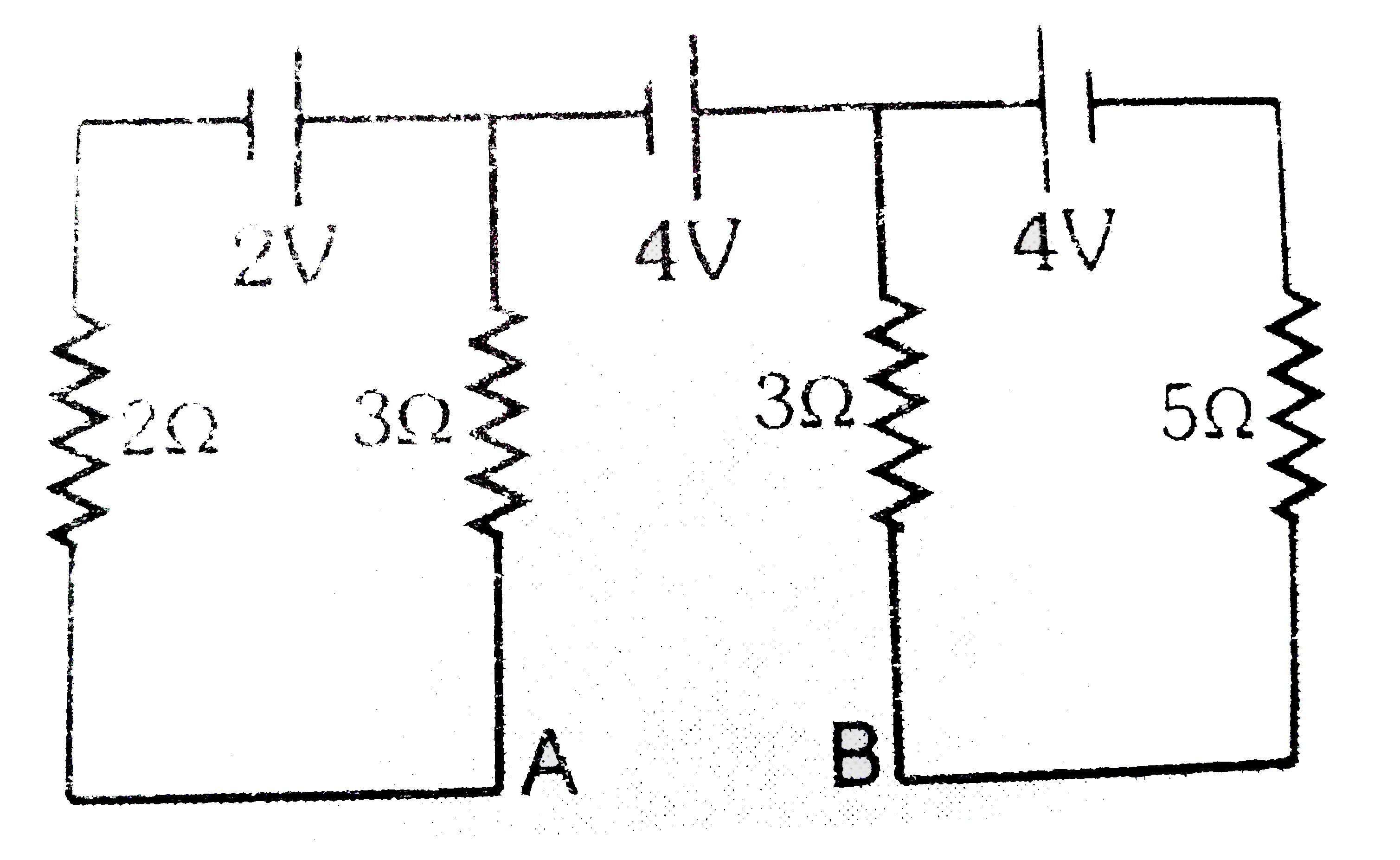
View SolutionIn the given circuit calculate potential difference between A and B

View SolutionThe potential difference between points A and B in the circuit shown in figure will be

View Solution

